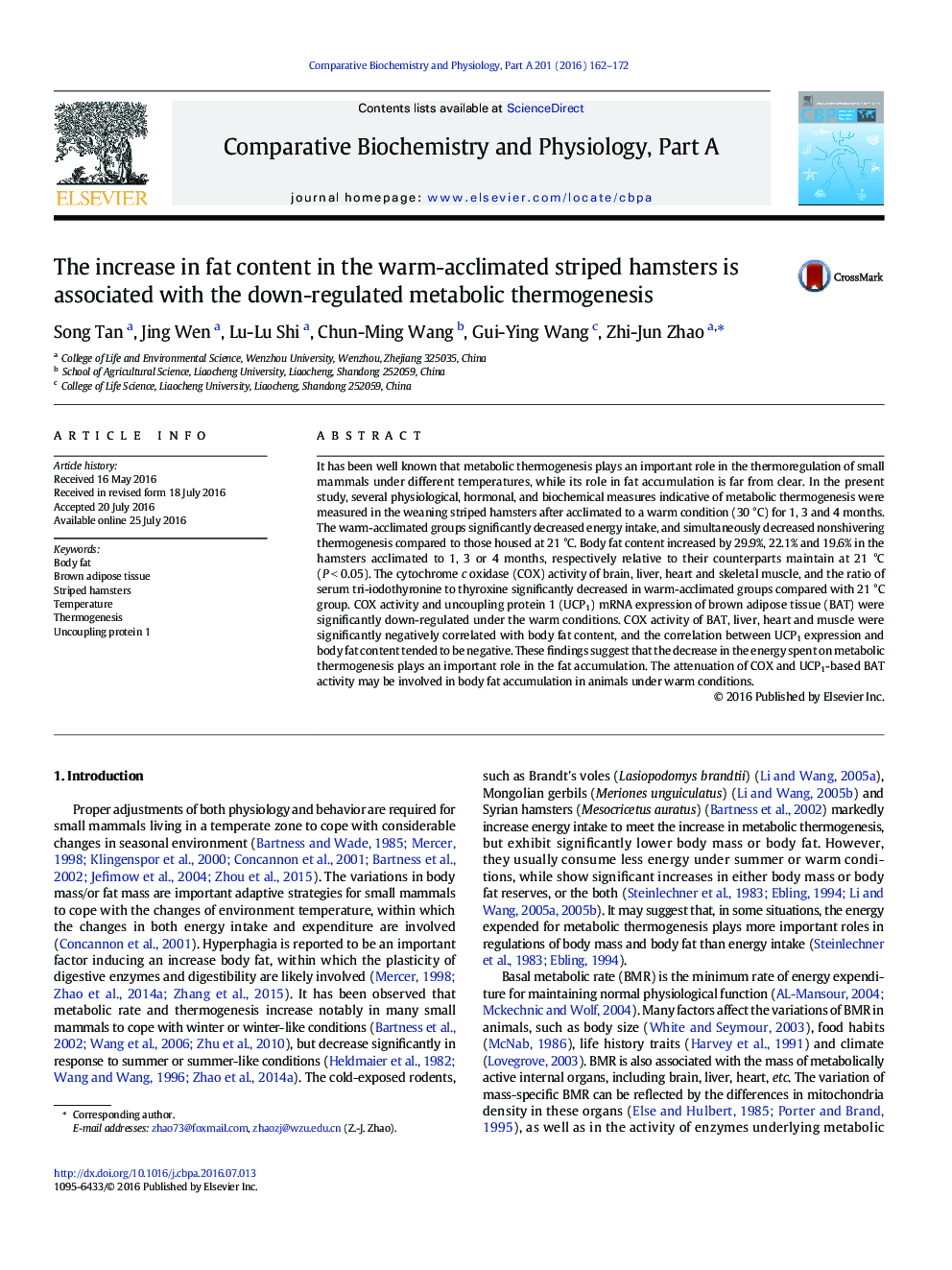| Article ID | Journal | Published Year | Pages | File Type |
|---|---|---|---|---|
| 1971836 | Comparative Biochemistry and Physiology Part A: Molecular & Integrative Physiology | 2016 | 11 Pages |
It has been well known that metabolic thermogenesis plays an important role in the thermoregulation of small mammals under different temperatures, while its role in fat accumulation is far from clear. In the present study, several physiological, hormonal, and biochemical measures indicative of metabolic thermogenesis were measured in the weaning striped hamsters after acclimated to a warm condition (30 °C) for 1, 3 and 4 months. The warm-acclimated groups significantly decreased energy intake, and simultaneously decreased nonshivering thermogenesis compared to those housed at 21 °C. Body fat content increased by 29.9%, 22.1% and 19.6% in the hamsters acclimated to 1, 3 or 4 months, respectively relative to their counterparts maintain at 21 °C (P < 0.05). The cytochrome c oxidase (COX) activity of brain, liver, heart and skeletal muscle, and the ratio of serum tri-iodothyronine to thyroxine significantly decreased in warm-acclimated groups compared with 21 °C group. COX activity and uncoupling protein 1 (UCP1) mRNA expression of brown adipose tissue (BAT) were significantly down-regulated under the warm conditions. COX activity of BAT, liver, heart and muscle were significantly negatively correlated with body fat content, and the correlation between UCP1 expression and body fat content tended to be negative. These findings suggest that the decrease in the energy spent on metabolic thermogenesis plays an important role in the fat accumulation. The attenuation of COX and UCP1-based BAT activity may be involved in body fat accumulation in animals under warm conditions.
